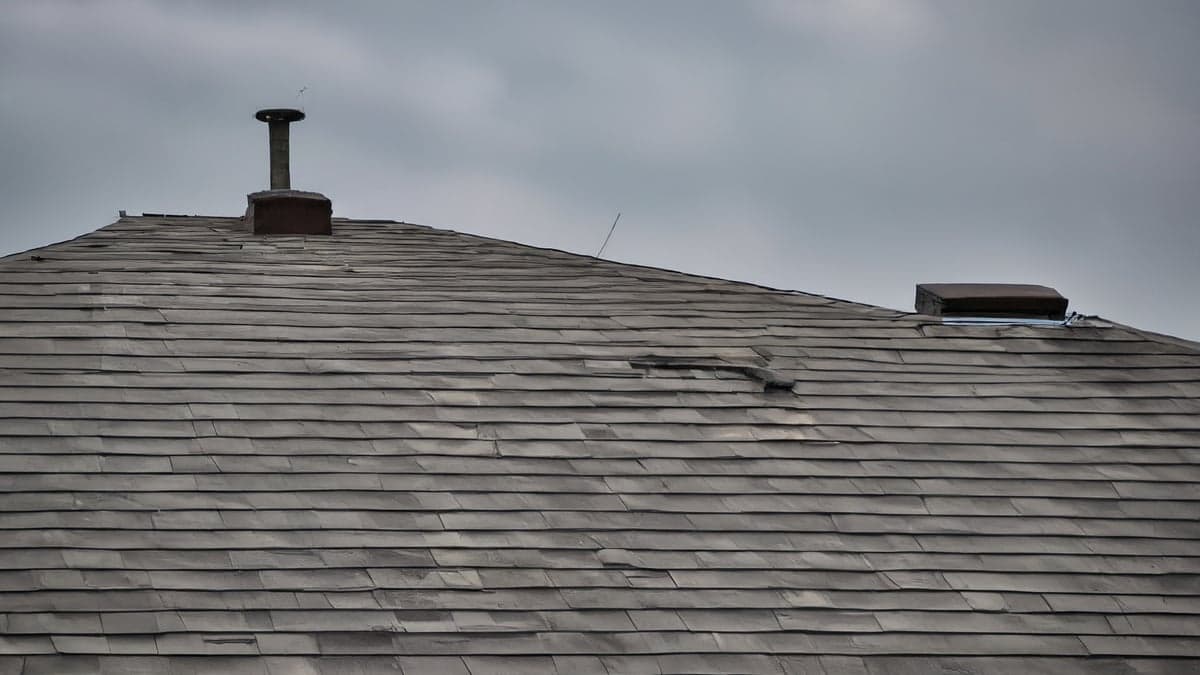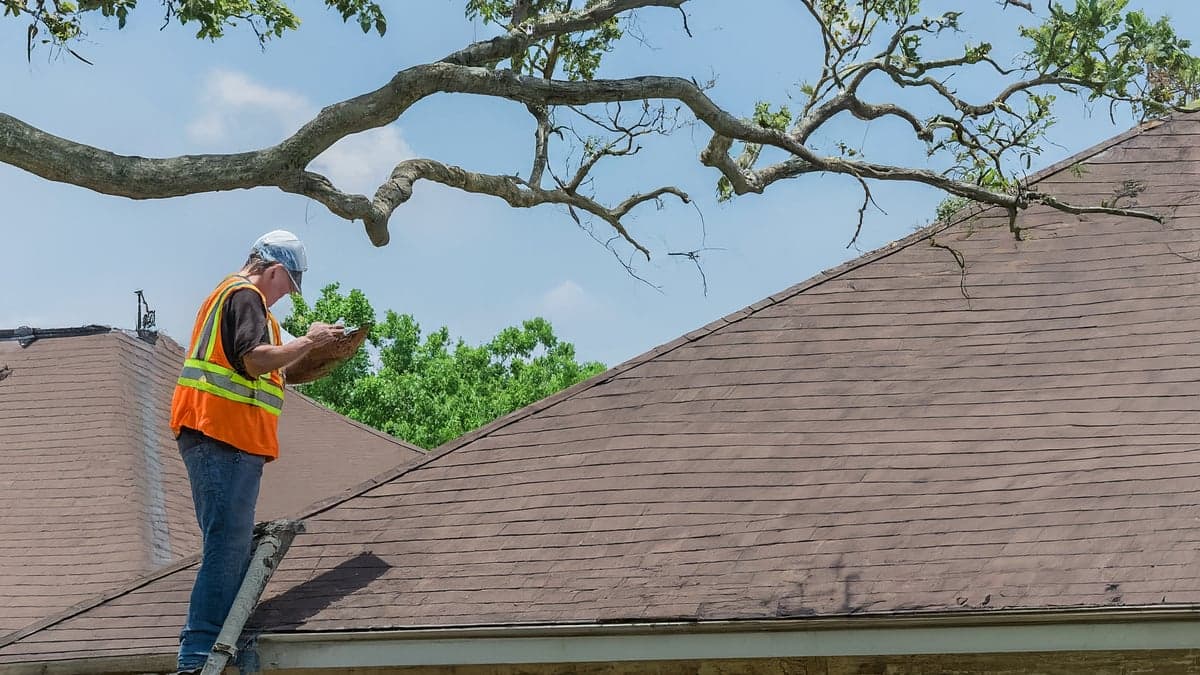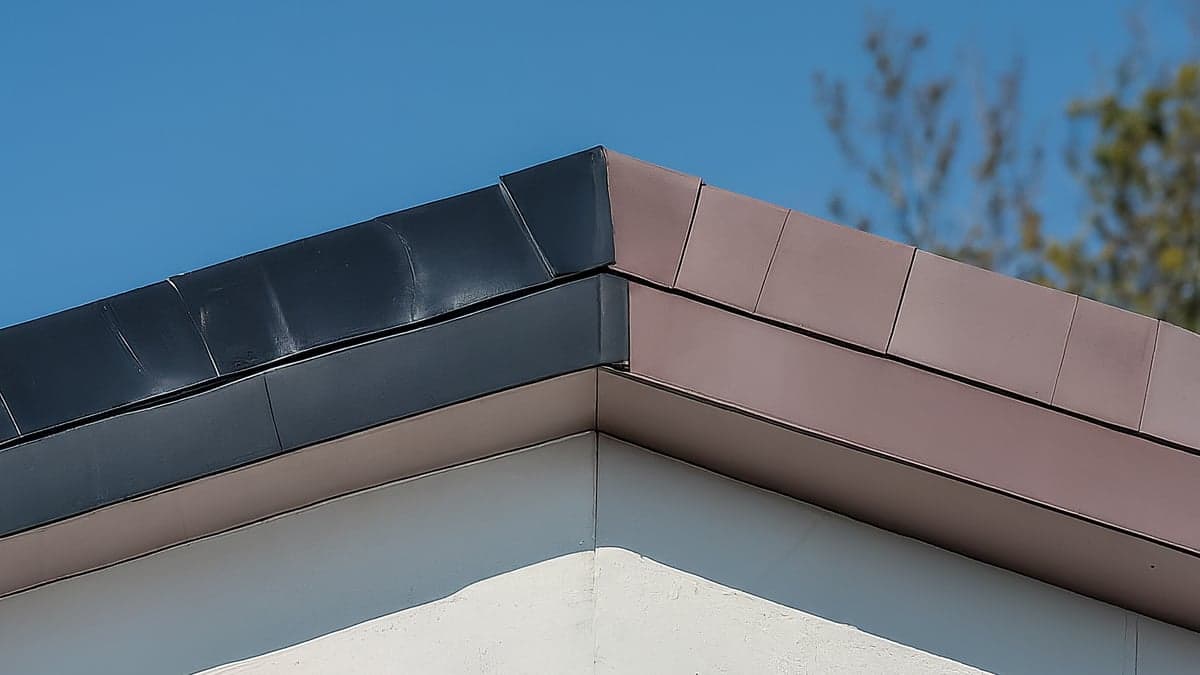Emergency Roof Tarping: Houston's 24/7 Protection Guide
Learn when and how emergency roof tarping protects your Houston home after storm damage. 24/7 emergency service available.
Need Expert Roofing Help?
Free inspections and consultations throughout Houston & Sugar Land
When severe weather strikes Houston, roof damage can occur in an instant—but the secondary damage from water intrusion can be far more devastating and costly. Emergency roof tarping provides critical temporary protection that can save you tens of thousands of dollars in interior damage while you arrange permanent repairs.
At Xore Roofing, our 24/7 emergency tarping crews respond throughout Harris, Fort Bend, and Brazoria Counties with average arrival times under 30 minutes. This comprehensive guide explains when you need emergency tarping, what to expect, and how it protects your home and insurance claim.
What Is Emergency Roof Tarping?
Emergency roof tarping is the temporary installation of heavy-duty, waterproof tarps over damaged sections of your roof to prevent water intrusion until permanent repairs can be completed.
Key Purposes:
- Immediate Protection: Stops water from entering your home
- Damage Prevention: Prevents secondary damage to interior, insulation, and structure
- Insurance Compliance: Most policies require immediate mitigation of damage
- Time Buffer: Gives you time to properly plan permanent repairs
- Peace of Mind: Protection during extended repair waits
Typical Duration: 2-8 weeks (until permanent repairs completed)
When You Need Emergency Roof Tarping
Critical Situations (Call Immediately - 24/7)
1. Active Water Intrusion
- Water entering your home through ceiling
- Multiple drip points during rain
- Standing water in attic
- Water running down walls
Risk if Delayed:
- $5,000-$25,000+ in interior damage
- Mold growth within 24-48 hours
- Electrical hazards
- Structural damage to ceiling joists
2. Large Missing Sections
- Multiple shingles completely blown off
- Exposed roof deck visible
- Bare wood showing through
- Sections measuring >10 square feet
Risk if Delayed:
- Rapid water damage during next rain
- Wind-blown rain saturation
- Accelerated deck deterioration
3. Major Storm Damage
- Tree fell through roof
- Large puncture or hole
- Structural damage visible
- Significant debris impact
Risk if Delayed:
- Major water intrusion
- Structural instability
- Wildlife/pest entry
- Complete interior destruction
4. Failed Flashing
- Chimney flashing torn off
- Valley flashing damaged
- Skylight compromised
- Vent pipe exposed
Risk if Delayed:
- Focused water infiltration
- Interior wall damage
- Hidden moisture accumulation
Urgent Situations (Call Within 24 Hours)
1. Partial Shingle Loss
- 20-50 shingles missing or damaged
- No current leak but rain expected
- Underlayment exposed
- Vulnerable areas identified
2. Wind Damage
- Shingles lifted but attached
- Edge deterioration
- Fascia damage
- Soffit exposure
3. Hail Damage Assessment
- Visible impact marks
- Granule loss significant
- Cracked shingles
- Insurance claim pending
The Emergency Tarping Process
Step 1: Emergency Call (Available 24/7)
What to Report:
- Exact location of damage
- Extent of visible damage
- Active leaking or not
- Interior water damage present
- Safety hazards
Our Response:
- Crew dispatched immediately
- ETA provided (typically 30-90 minutes)
- Safety assessment over phone
- Preliminary advice given
Call: (832) 499-4585 (24/7 Emergency Line)
Step 2: On-Site Assessment (15-30 minutes)
Our Emergency Team:
- Licensed roofing professionals
- Safety equipment and proper gear
- Commercial-grade tarps and materials
- Photo documentation equipment
- Insurance claim expertise
Assessment Includes:
- Safety evaluation of structure
- Damage extent documentation
- Interior moisture check
- Immediate action plan
- Cost estimate provided
Step 3: Emergency Tarping Installation (1-4 hours)
Professional Installation Process:
Debris Removal:
- Clear damaged materials safely
- Remove loose shingles/nails
- Clean installation surface
- Inspect for additional damage
Tarp Sizing & Placement:
- Heavy-duty, UV-resistant tarps (6-12 mil thickness)
- Extends 3-4 feet beyond damaged area
- Covers ridge to past eaves
- Overlaps multiple tarps if needed
Secure Fastening:
- 2x4 lumber battens on top of tarp
- Screwed through tarp into roof deck
- Cap nails along edges
- Weighted sandbags where needed
- Wind resistance up to 70 mph
Final Inspection:
- Water-tightness verification
- Secure attachment confirmation
- Surrounding area check
- Interior follow-up
- Photo documentation
Step 4: Documentation & Next Steps
You Receive:
- Detailed photo documentation (before/during/after)
- Written damage assessment
- Tarping invoice (for insurance)
- Repair estimate for permanent fix
- Timeline for follow-up
- Insurance guidance
Cost of Emergency Roof Tarping
Typical Pricing (Houston Area)
Small Tarp (100-300 sq ft):
- Cost: $300-$800
- Coverage: Single damage area
- Timeline: 1-2 hours
- Common: Minor storm damage
Medium Tarp (300-800 sq ft):
- Cost: $800-$1,500
- Coverage: Multiple areas or one large section
- Timeline: 2-3 hours
- Common: Standard storm response
Large Tarp (800-1500 sq ft):
- Cost: $1,500-$3,000
- Coverage: Major damage, multiple slopes
- Timeline: 3-4 hours
- Common: Tree damage, severe storms
Extra Large/Complex (1500+ sq ft):
- Cost: $3,000-$6,000+
- Coverage: Extensive damage, whole roof sections
- Timeline: 4-8 hours
- Common: Tornado, major hurricane damage
Additional Factors:
- Emergency surcharge (after hours, holidays): +$200-$500
- Height/pitch premium (steep or tall homes): +20-40%
- Difficult access (limited access, gated): +$100-$300
- Multiple stories: +$200-$500 per story
- Complex architecture: +$300-$800
Insurance Coverage
Most Houston homeowner policies cover:
- Emergency tarping costs (100% typically)
- Reasonable & necessary temporary protection
- Documented storm damage events
- Timely response to prevent further damage
Important Notes:
- Keep all receipts and invoices
- Take before/after photos
- Report damage to insurance within 24-72 hours
- Tarping may be deducted from final claim or paid separately
- Some policies have emergency service coverage limits
Average Coverage: $1,000-$5,000 for emergency tarping
DIY Tarping vs Professional Service
Why Professional Tarping Is Worth It
Safety Advantages:
- Fall risk elimination - roofing is 2nd leading cause of construction deaths
- Proper safety equipment - harnesses, anchors, ladders
- Weather safety - professionals trained for all conditions
- Structural assessment - identify unsafe areas
- Electric hazard awareness - avoid power lines, wet conditions
Quality Advantages:
- Proper materials - commercial-grade tarps rated for roofing
- Correct installation - prevents blow-off, leaks, further damage
- Comprehensive coverage - experience sizing and positioning
- Secure fastening - 70+ mph wind resistance
- Warranty protection - professional guarantee on installation
Financial Advantages:
- Insurance preferred - insurers want professional documentation
- Prevents more damage - poor DIY tarps often fail
- Claim documentation - photos, reports, professional assessment
- Liability protection - our insurance covers accidents
- Time savings - 4+ hours DIY vs. 1-2 hours professional
When DIY Makes Sense
Only consider DIY if:
- Small, easily accessible damage
- Ground-level or single-story
- Dry, safe weather conditions
- Simple flat or low-slope section
- No active leaking
- Just temporary overnight protection
DIY Requirements:
- Heavy-duty tarp (minimum 6-mil, preferably 12-mil poly)
- 2x4 lumber boards for battens
- Deck screws (3-inch)
- Sandbags or weights
- Proper ladder and safety equipment
- Helper for safety
Cost Savings: $200-$600 (but risk of damage far exceeds savings)
Houston-Specific Considerations
Hurricane Season (June-November)
Peak Demand Times:
- During/after tropical storms and hurricanes
- Response times may extend to 2-6 hours
- Pre-positioning crews during warnings
- Material shortages possible after major events
Preparation Tips:
- Keep Xore Roofing's number saved: (832) 499-4585
- Report damage immediately after storm passes
- Don't wait - tarping demand surges quickly
- Pre-storm inspections available
Severe Thunderstorms (Year-Round)
Houston Characteristics:
- Sudden, intense storms with little warning
- Straight-line winds (70+ mph)
- Large hail (golf ball to softball)
- Brief but destructive
Response Strategy:
- Inspect roof after every major storm
- Document damage immediately
- Call same-day for active leaks
- Schedule follow-up within 48 hours
Heavy Rainfall Events
Gulf Coast Reality:
- 4-12 inches of rain in single events
- Extended rainy periods
- Flash flooding concerns
- Prolonged saturation
Tarping Importance:
- Even small openings = major water intrusion
- Humidity accelerates mold growth
- Multiple rain events compound damage
- Temporary protection critical
What Happens After Tarping
Immediate Actions (First 24 Hours)
Interior Mitigation:
- Dry affected areas - fans, dehumidifiers
- Remove wet materials - carpets, furniture, belongings
- Document all damage - photos, videos, lists
- Contact insurance - file claim immediately
- Prevent mold - ventilation, circulation
Monitor Tarp:
- Check after every rain
- Look for water entry points
- Verify secure attachment
- Watch for wind damage
- Call if issues arise
Planning Permanent Repairs (Days 2-7)
Assessment Phase:
- Insurance adjuster meeting (schedule within 3-7 days)
- Detailed inspection by Xore Roofing
- Repair scope defined
- Material selection discussions
- Timeline established
Estimate & Approval:
- Comprehensive written estimate
- Insurance claim coordination
- Supplement negotiation if needed
- Financing options explored
- Schedule repair date
Average Timeline:
- Simple repairs: 7-14 days
- Partial replacement: 2-4 weeks
- Full replacement: 3-6 weeks
Tarp Maintenance & Monitoring
Weekly Checks:
- Verify all fasteners secure
- Look for tarp tears or wear
- Check for water pooling
- Inspect edge seals
- Remove debris buildup
After Storms:
- Immediate visual inspection
- Interior leak check
- Re-secure if needed
- Document any new damage
Call for Re-Tarping If:
- Tarp shows wear (typical after 4-8 weeks)
- Wind damage occurs
- Extended timeline for repairs
- Additional damage discovered
Common Emergency Tarping Questions
How long will my tarp last?
Typical Duration: 4-8 weeks with proper installation and monitoring
Factors Affecting Lifespan:
- Tarp quality (6-mil vs 12-mil)
- Weather exposure (sun, wind, rain)
- Installation quality
- Maintenance and monitoring
When to Replace:
- Visible wear or tears
- After 8 weeks (UV degradation)
- Major wind events
- Insurance adjuster request
Will tarping damage my roof further?
Professional Installation: No - proper techniques protect your roof
Our Methods:
- Screws into deck (sealed holes during repair)
- Battens distribute pressure evenly
- No adhesives that damage shingles
- Strategic placement avoids critical areas
DIY Risk: Yes - improper installation can cause additional damage
Can I get my roof repaired immediately?
Typical Wait Times:
- Emergency repairs: 1-3 days
- Standard repairs: 1-2 weeks
- Replacement: 2-6 weeks
- Post-major storm: 4-12 weeks (high demand)
Immediate Service When:
- Ongoing emergency situation
- Safety hazard present
- Simple repair (small area)
- Weather window available
Most Cases: Tarping provides protection during proper planning and scheduling
What if the tarp fails?
Call Immediately: (832) 499-4585
Our Response:
- Same-day service to re-secure or replace
- No additional charge if installation failure (warranty)
- Weather-related wear normal, minimal charge
- Documentation for insurance claim
Prevention:
- Professional installation
- Regular monitoring
- Proactive replacement before failure
Will insurance cover emergency tarping?
Generally Yes:
- Covered as part of storm damage claim
- "Reasonable and necessary" to prevent further damage
- Most policies include emergency mitigation
- Save all receipts and documentation
Process:
- Pay for tarping service
- Submit receipt with claim
- Insurance reimburses (or deducts from claim total)
- Some policies pay separately from deductible
Confirm with your insurance agent or adjuster
Why Choose Xore Roofing for Emergency Tarping
24/7 Availability:
- Always available, no holidays or after-hours charges
- Live dispatch, not answering service
- Average 30-minute response time
- Multiple crews across Houston area
Professional Service:
- Licensed and insured
- 10+ years emergency response experience
- Commercial-grade materials
- Proper safety equipment and procedures
- Insurance-preferred contractor
Comprehensive Support:
- Free storm damage inspection
- Insurance claim assistance
- Photo documentation included
- Written damage assessment
- Repair estimates provided
- Financing options available
Service Area:
- Houston
- Sugar Land
- Pearland
- Katy
- Missouri City
- Stafford
- All of Harris, Fort Bend, and Brazoria Counties
Emergency Contact Information
24/7 Emergency Hotline: (832) 499-4585
What to Report:
- Your name and address
- Nature of damage (leak, missing shingles, etc.)
- Active leaking? (Yes/No)
- Safety concerns
- Best contact number
Response Time:
- Emergency (active leak): 30-90 minutes
- Urgent (rain coming): 2-4 hours
- Standard (stable damage): Same day appointment
Online: xoreroofing.com/contact (monitored 24/7)
Conclusion
Emergency roof tarping is not just a temporary fix—it's critical protection that can save you thousands in interior damage, preserve your insurance claim, and provide peace of mind while permanent repairs are arranged.
When storm damage strikes your Houston home, don't wait. Every minute of delay increases the risk of catastrophic interior damage, mold growth, and structural issues.
Xore Roofing's 24/7 emergency response team is always ready.
Call now: (832) 499-4585
Related Services:
Related Topics:
About Xore Roofing Team
Expert roofing professionals serving Houston, Sugar Land, and Fort Bend County since 2010. Specializing in residential and commercial roofing with a focus on quality, customer service, and long-term relationships.



